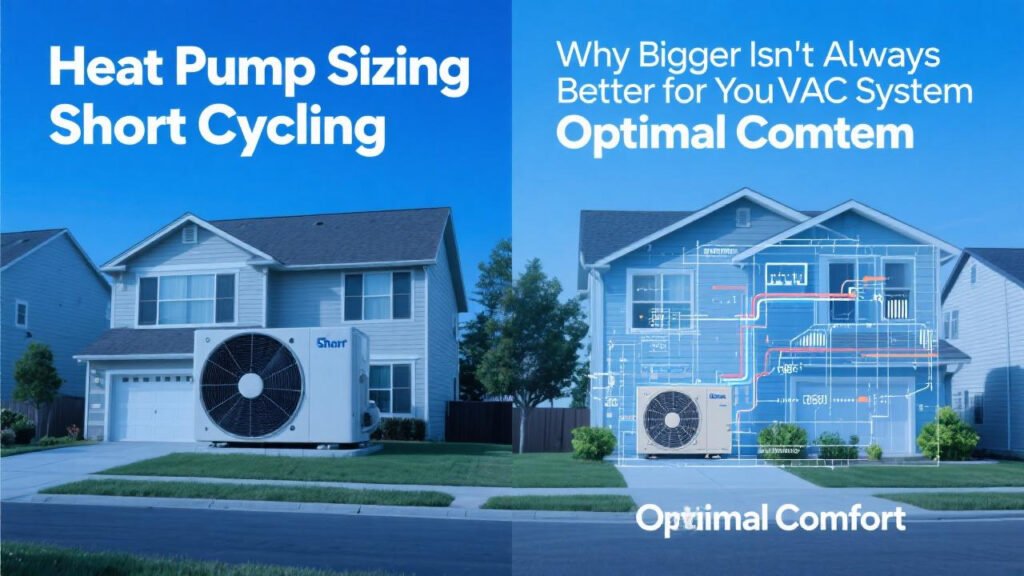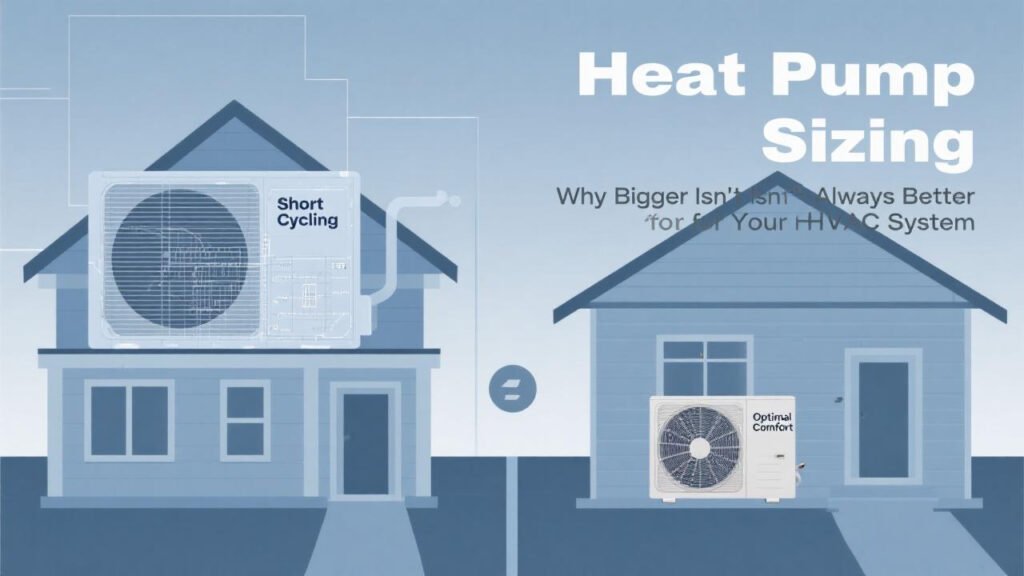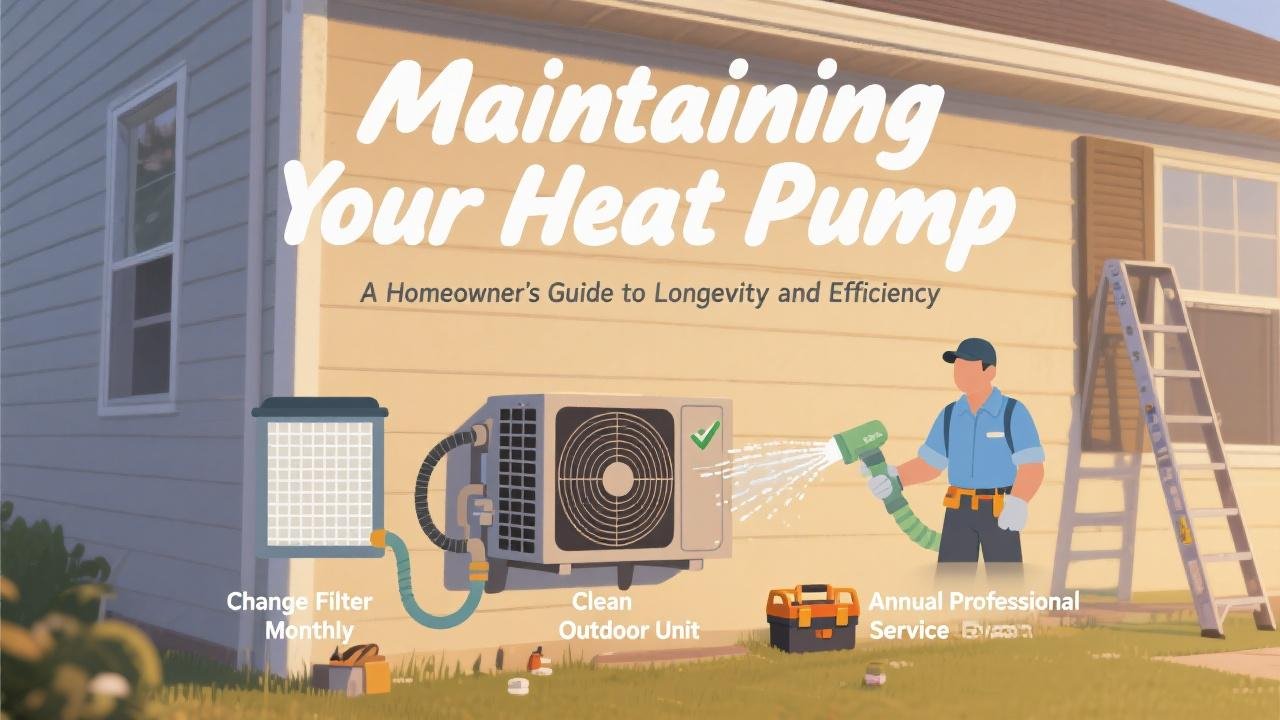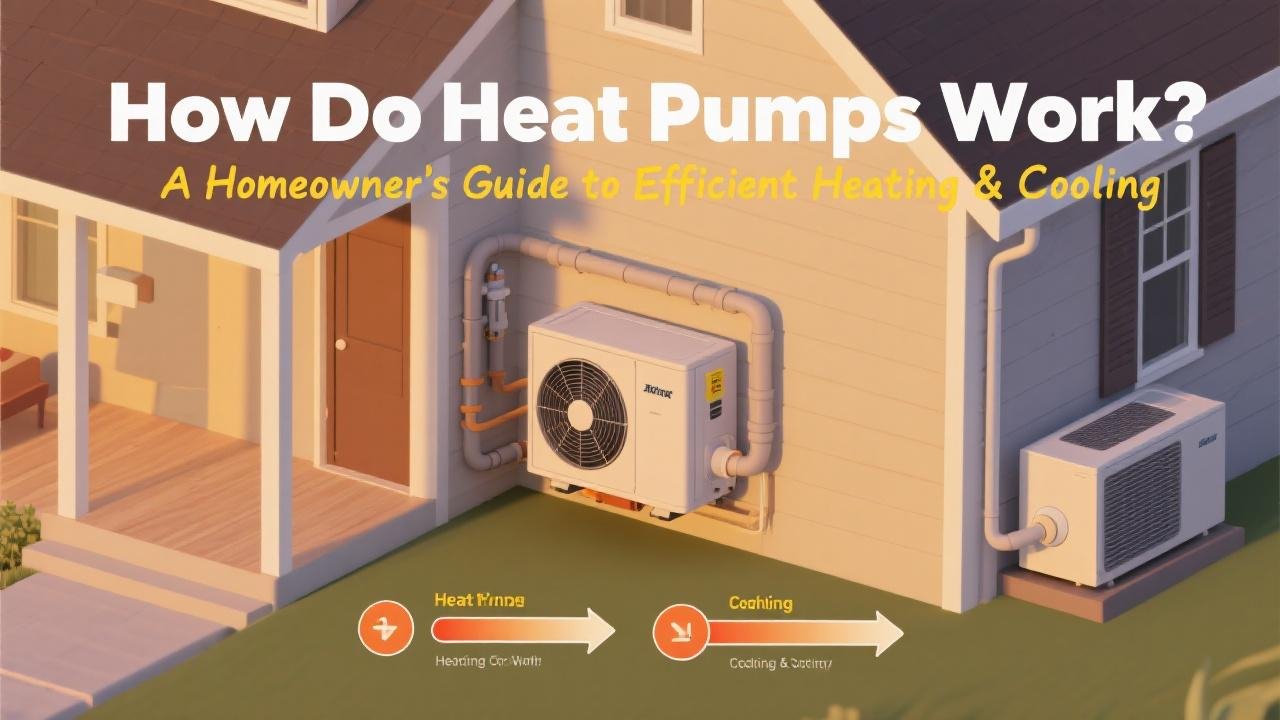Finding the Goldilocks Fit for Your Home’s Comfort
When investing in a new heat pump system for your home in 2025, one of the most critical factors for achieving optimal efficiency, comfort, and longevity is correct sizing. Unlike some home appliances where “bigger is better” might seem like a good rule of thumb, with HVAC systems, and particularly heat pumps, this is definitely not the case. An improperly sized heat pump—whether too large or too small—can lead to a host of problems, from reduced efficiency and higher energy bills to uncomfortable temperature swings and premature system failure.
This guide will explain why proper heat pump sizing is essential, the issues with incorrect sizing, and how professionals determine the “just right” capacity for your home.
Why Accurate Heat Pump Sizing is Crucial
A correctly sized heat pump will:
* Maximize Energy Efficiency: Operate at its designed efficiency levels (SEER2 and HSPF2 ratings ), minimizing energy waste and keeping your utility bills low.
* Provide Consistent Comfort: Maintain even temperatures throughout your home without frequent or extreme fluctuations.
* Ensure Proper Dehumidification (in Cooling Mode): Run long enough cycles to effectively remove humidity from the air, enhancing comfort.
* Extend System Lifespan: Avoid the excessive wear and tear associated with oversized or undersized units.
* Operate Quietly: Properly sized systems tend to run more smoothly and quietly.
The Problems with an Oversized Heat Pump

It might seem logical that a larger, more powerful heat pump would provide better heating and cooling. However, an oversized unit can cause several issues:
- Short Cycling: The most common problem. An oversized heat pump will heat or cool your space too quickly, reach the thermostat setpoint rapidly, and then shut off. This frequent starting and stopping (short cycling) leads to:
- Reduced Efficiency: Heat pumps are most efficient when they run for longer, more consistent cycles. Short cycling means the system rarely operates at its peak efficiency.
- Increased Wear and Tear: Frequent starts and stops put more stress on components like the compressor and fan motors, potentially leading to premature failure and more frequent repairs.
- Poor Dehumidification: In cooling mode, the system doesn’t run long enough to effectively remove humidity from the air, leaving your home feeling cool but clammy.
- Temperature Swings: You might experience noticeable temperature fluctuations as the system quickly blasts cold or hot air and then shuts off.
- Higher Upfront Cost: Larger units are generally more expensive to purchase.
- Potential Ductwork Issues: Existing ductwork might not be adequately sized for the airflow requirements of a larger unit, leading to noise and reduced performance.
The Problems with an Undersized Heat Pump
Conversely, a heat pump that is too small for your home will also struggle:
- Constant Operation: The unit will run almost continuously, trying to reach the thermostat setpoint but never quite getting there, especially during extreme weather (very hot or very cold days).
- Inability to Maintain Comfort: Your home may feel consistently too cold in winter or too warm in summer.
- Increased Energy Bills: While it might seem counterintuitive, an undersized unit working constantly can consume more energy than a correctly sized one operating efficiently.
- Excessive Strain and Premature Failure: Running non-stop puts immense strain on the system’s components, leading to a shorter lifespan.
- Reliance on Backup Heat (in Winter): An undersized heat pump may frequently need to rely on its less efficient auxiliary or emergency heating strips in cold weather, significantly increasing electricity consumption.
How Professionals Determine the Right Heat Pump Size: The Manual J Calculation
Qualified HVAC professionals do not size heat pumps based on guesswork or simple rules of thumb like square footage alone. They use a detailed calculation method known as Manual J, developed by the Air Conditioning Contractors of America (ACCA).
A Manual J calculation takes into account a wide range of factors specific to your home, including :
* Home Size and Layout: Square footage, ceiling heights, number of floors.
* Insulation Levels: In walls, attic, floors, and basement/crawlspace.
* Window Type and Efficiency: Number of windows, size, type (single, double, triple-pane), orientation, and any low-e coatings or films.
* Door Type and Efficiency:
* Air Infiltration Rates: How “leaky” or airtight your home is.
* Ductwork Condition and Location:
* Orientation of the Home: Which direction the house faces.
* Local Climate Data: Design temperatures for your specific region (average highs and lows).
* Number of Occupants: People generate heat.
* Heat-Generating Appliances: Ovens, dryers, etc.
* Shading: From trees, overhangs, or nearby buildings.
* Homeowner Preferences: Desired indoor temperatures.
By inputting all this data into specialized software, the contractor can accurately determine your home’s heating and cooling “load” – the amount of heating (in BTUs – British Thermal Units) needed on the coldest days and the amount of cooling needed on the hottest days. The heat pump is then sized to meet these specific loads.
Other Manuals Used by Professionals:
* Manual S: Used for selecting the right equipment once the load is determined by Manual J.
* Manual D: Used for designing the ductwork system.

What Homeowners Can Do:
- Insist on a Manual J Calculation: When getting quotes for a new heat pump, ensure each contractor performs (or has performed) a Manual J load calculation. Be wary of any contractor who tries to size a system based solely on the size of your old unit or square footage.
- Provide Accurate Information: Give your contractor accurate details about your home, insulation, windows, and any recent energy efficiency upgrades you’ve made.
- Discuss Your Comfort Preferences: Let them know if certain rooms are typically too hot or too cold.
- Compare Quotes Thoughtfully: When comparing quotes, look at the proposed system size (in BTUs or tons – 1 ton of cooling = 12,000 BTUs/hour) and ensure it’s based on a proper load calculation. If sizes vary significantly between contractors, ask them to explain their methodology.
Precision Sizing for Peak Performance
Properly sizing your heat pump is not just a technical detail; it’s fundamental to achieving the energy efficiency, comfort, and longevity you expect from your HVAC investment in 2025. Bigger is not better, and too small is a recipe for discomfort and high bills. By ensuring your HVAC contractor performs a thorough Manual J load calculation, you can be confident that your new heat pump will be the “just right” fit for your home, providing efficient and reliable comfort for years to come.
When seeking installers, consider using resources that help connect you with vetted professionals who adhere to industry best practices for system design and installation, similar to how EnergySage assists with solar installations.



